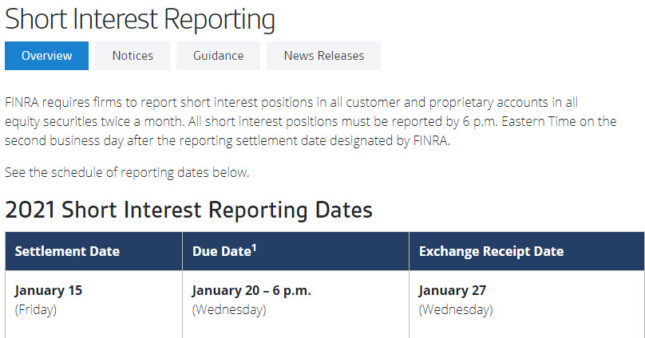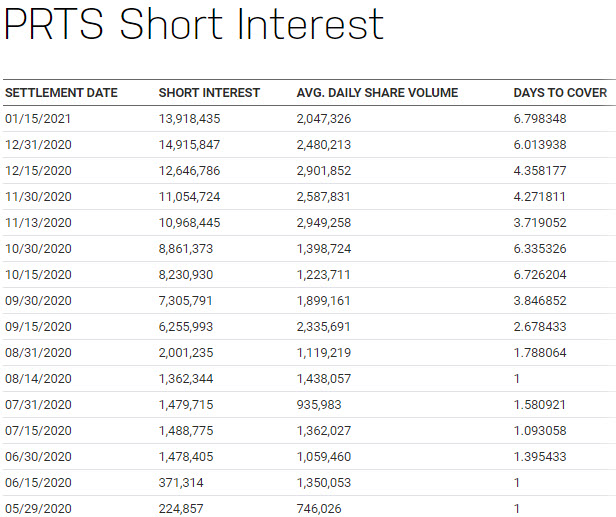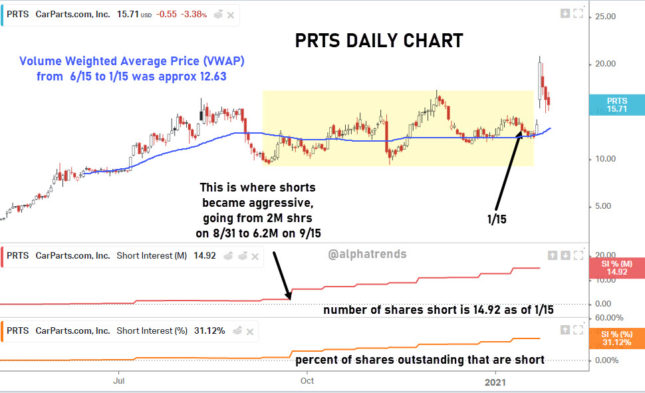“Short interest” refers to the number of shares sold short and not covered (bought back). Because they have not been covered, they represent a source of future demand, either at lower prices as shorts lock in profits, or at higher prices as they buy the stock back to limit losses.
The number of shares sold short is released by FINRA twice per month. The number reported to the public is never the real time number, in fact it is a minimum of two weeks old. For instance, the total number of shares for stocks as of 1/15 is reported to FINRA by 1/20 and was released as public information on 1/27. That means the stocks trade for a FULL SEVEN DAYS before the information is released to the public.

So what value are these numbers? As a stand-alone number, we don’t get a lot of value. For instance, in shares of PRTS the number of shares sold short and not covered (bought back) was 13,918,435.

At the time of reporting, the average daily volume of PRTS was 2,047,326. When we divide the short interest by the average daily volume, we get the number knows as “Days to Cover” (DTC) This is also known as “Short Interest Ratio” (SIR.) For PRTS, the DTC, is 6.8. This means that if the shorts wanted to cover their position in full, it would take them just under 7 days to do so if they were the only volume in the market. Of course, it would take a lot longer to buy all that stock back. I generally consider a SIR of 5 or greater to be significant, the higher this number is, the more difficult it is to exit a short position.
If we look at the short interest trend, we begin to recognize the value of the information. Here you can see that just 6 months ago there were only 373K shares sold short in PRTS. That means the shorts added 13.6 million shares in 6 months.

Now we know WHEN they shorted. Next, we want to know at what price they shorted. If they shorted at higher prices, they would not feel pressure to buy back. As we see in this chart, they shorted the majority of the shrs while the stock was in a range of 10-15/share. The Volume Weighted Average Price from 6/15 to 1/15 was ~12.63. We can make an assumption this is the approximate price the majority of the short position is initiated.
When the stock rises rapidly, the shorts lose money and as they try to cover their bearish bet, they compete for supply from new longs (who are often trying to scare the shorts into buying more) Because there is extra competition to buy the stock, the shorts start to feel pressure from mounting losses and they become “squeezed.”

When PRTS broke higher on Tuesday, how do you think the short sellers felt if their avg sale price is 12.63? I have no position in this stock but am watching it for a trade next week.


